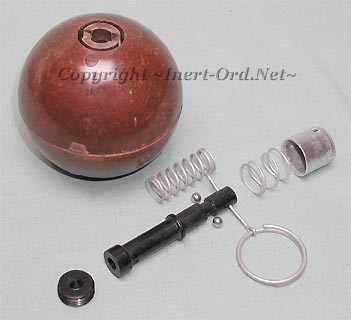
Here are a couple of grenades for dispersal of "Tear Gas" used in crowd control. Two different delivery systems.
The M47 is made of two rubber hemispheres vulcanized together. This vents gas from a small hole.
The M227 igniter has a dual safety feature, with a 2.5 -3.5 second delay.
The M25 is constructed of a phenolic material. This is a bursting type.
The fuze (C12) is integral to the grenade and has a 1.5 to 3 second delay.


